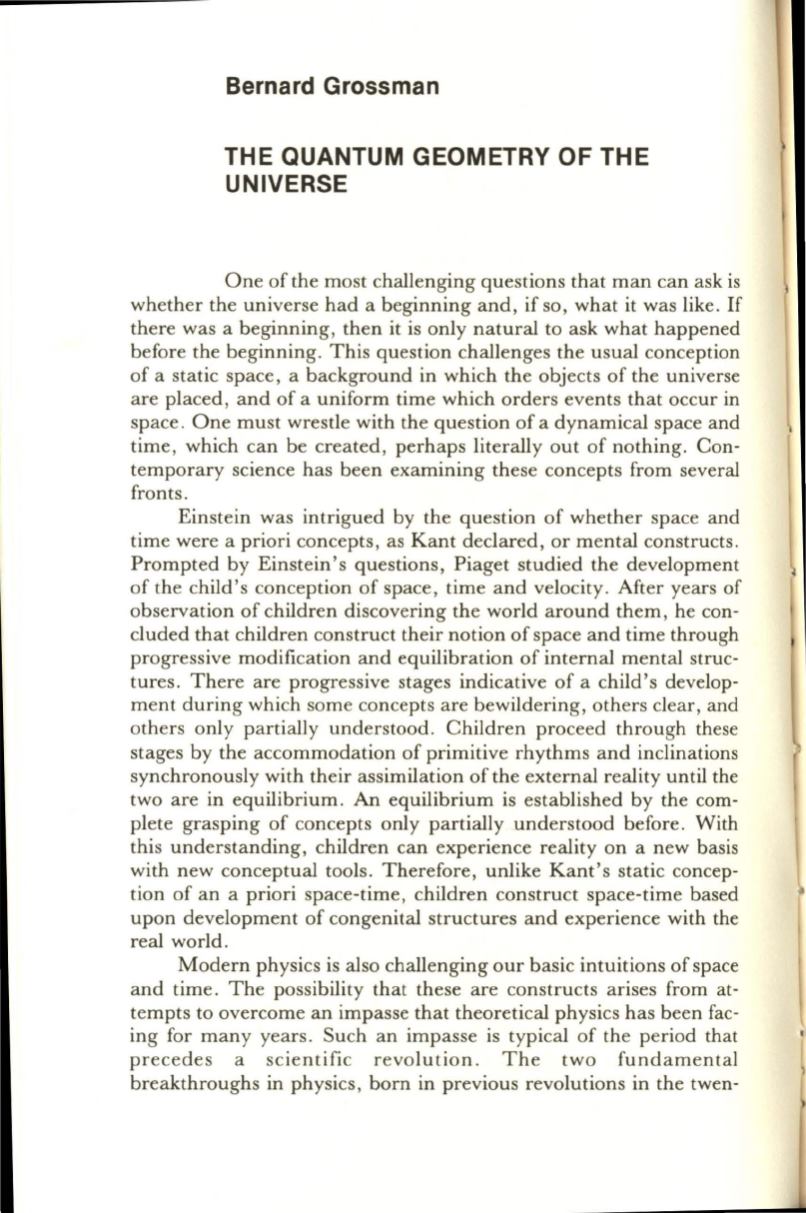
Bernard Grossman
THE QUANTUM GEOMETRY OF THE
UNIVERSE
One of the most challenging questions that man can ask is
whether the universe had a beginning and, if so, what it was like.
If
there was a beginning, then it is only natural to ask what happened
before the beginning. This question challenges the usual conception
of a static space, a background in which the objects of the universe
are placed, and of a uniform time which orders events that occur in
space. One must wrestle with the question of a dynamical space and
time, which can be created, perhaps literally out of nothing. Con–
temporary science has been examining these concepts from several
fronts .
Einstein was intrigued by the question of whether space and
time were a priori concepts , as Kant declared, or mental constructs.
Prompted by Einstein's questions, Piaget studied the development
of the child's conception of space, time and velocity . After years of
observation of children discovering the world around them, he con–
cluded that children construct their notion of space and time through
progressive modification and equilibration of internal mental struc–
tures. There are progressive stages indicative of a child's develop–
ment during which some concepts are bewildering, others clear, and
others only partially understood. Children proceed through these
stages by the accommodation of primitive rhythms and inclinations
synchronously with their assimilation of the external reality until the
two are in equilibrium.
An
equilibrium is established by the com–
plete grasping of concepts only partially understood before. With
this understanding, children can experience reality on a new basis
with new conceptual tools. Therefore, unlike Kant's static concep–
tion of an a priori space-time, children construct space-time based
upon development of congenital structures and experience with the
real world.
Modern physics is also challenging our basic intuitions of space
and time. The possibility that these are constructs arises from at–
tempts to overcome an impasse that theoretical physics has been fac–
ing for many years . Such an impasse is typical of the period that
precedes a scientific revolution . The two fundamental
breakthroughs in physics, born in previous revolutions in the twen-


